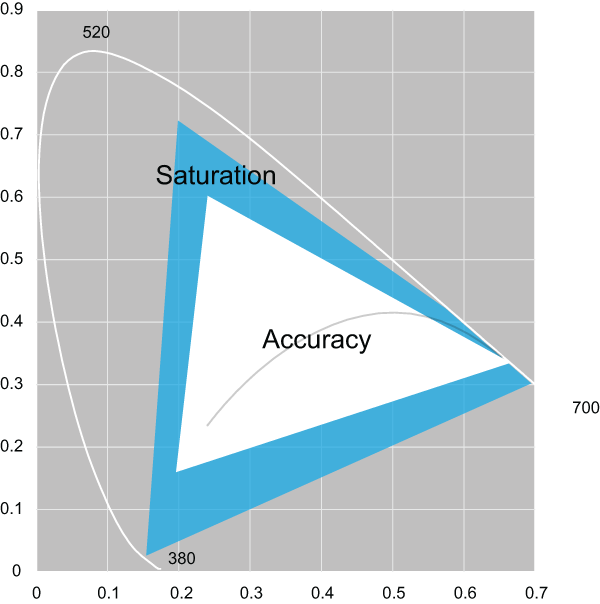Chromasync Pro: Simple Color Consistency
A Closer Look at Chromasync Pro: Breakthrough Technology that Simplifies Color Consistency. With Chromasync Pro, Color Kinetics has developed a new, smarter approach to achieving color consistency—on…
A Closer Look at Chromasync Pro: Breakthrough Technology that Simplifies Color Consistency
With Chromasync Pro, Color Kinetics has developed a new, smarter approach to achieving color consistency—one that enables lighting professionals to simply pick the desired color and have confidence in the results. Here we explore how our approach works, why it’s different, and how it enables lighting designers to meet their specific needs—and create exceptional lighting implementations.
To meet the varied needs of the marketplace requires a range of LED chemistries (or LED combinations). RGBW offers the highest flexibility. RGBA provides an expanded gamut is needed. And Color Kinetics IntelliHue is the right choice for the best quality whites. Each of these chemistries has specific strengths and weaknesses and lighting designers know how to expertly mix and match them to achieve maximum impact. However, these differences require individualized tuning to achieve the desired effects.
DMX and what is n-to-n?
Communication with each luminaire happens by sending it a set of DMX values; one for each color. This data tells the luminaire how much of each channel to use to create the desired color and intensity. At Color Kinetics, we call this operating in n-to-n mode—meaning that we’re mapping DMX values one-to-one (n-to-n) with luminaire channels. When multiple luminaire chemistries are used on the same installation each chemistry will have a unique set of DMX values to hit any given color point. To minimize the perceived color differences between luminaire chemistries lighting designers must adjust each one individually—which can be a time-consuming process.
Binning creates color variation
Differences inherent in both design and manufacturing lead to color variations between luminaires of the same chemistry. This luminaire-to-luminaire difference is the variation of flux and color of LEDs. LED manufacturers do their best to minimize these differences but are unable to provide tight enough binning to remove color variation at the luminaire level. To eliminate this visible color difference a lighting designer must go further than determining DMX values for each chemistry. They must adjust each specific luminaire to account for its unique LED profile—work that requires expertise and time.
The Challenge: We communicate in luminaire gamut
The root of this complexity comes from communicating with luminaires n-to-n. Unless a lighting designer uses color measurement feedback, they’re limited to manually tuning color by eye to overcome those inherent variations in flux and color. Each designer has methods and skills to overcome this problem, but getting all luminaires in an installation to match is both costly and time consuming.
The Solution: Communicate in color
Chromasync Pro takes an innovative new approach, one that we call 3-to-n control. Using 3-to-n control requires mapping input from 3 DMX values to whatever number of channels the luminaire might have. This mapping begins by defining a single RGB gamut that is used to communicate the desired color to every luminaire. Then—to compensate for individual luminaire binning variations—
each Color Kinetics Chromasync luminaire has its unique LED profile measured and coded into it at the factory. This allows each luminaire to pinpoint the desired color using its individual fingerprint.
Chromasync Pro adds a new proprietary mapping algorithm that puts all chemistries into the same gamut and expands saturation access to all available colors. It subdivides the gamut into two regions, the Accuracy and Saturation regions, and transitions seamlessly between them.

- The Accuracy region is the set of colors that all luminaires of any chemistry can produce, typically whites and pastels. When selecting colors in this region lighting designers will automatically get accuracy and consistency across the Chromasync Pro portfolio.
- The Saturation region is where each luminaire can be pushed to its saturated limits while keeping the RGB communication gamut the same. Consistency in the saturation region is constrained by chemistry mixes (RGBW and RGBA will have different outputs) and binning tolerances. However, the mapping algorithm ensures the closest possible match, and consistent behavior between luminaire types.
Seeing is believing
This innovative 3-to-n color targeting approach is just one of the technological improvements integrated into Chromasync Pro. Chromasync Pro leverages Color Kinetics years in the lighting industry to significantly enhance control and quality—all while removing the heavy lifting from the process of achieving color uniformity.
How Did We Do?
Chromasync & Chromasync Pro
